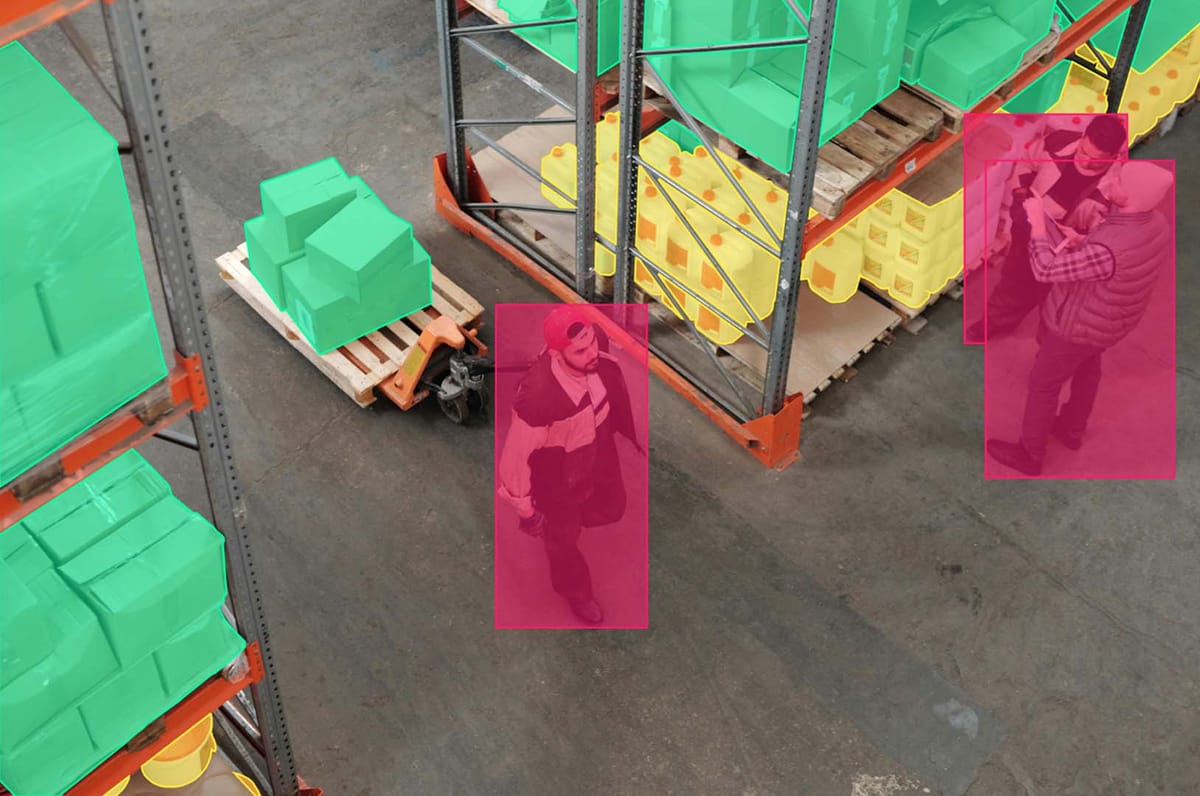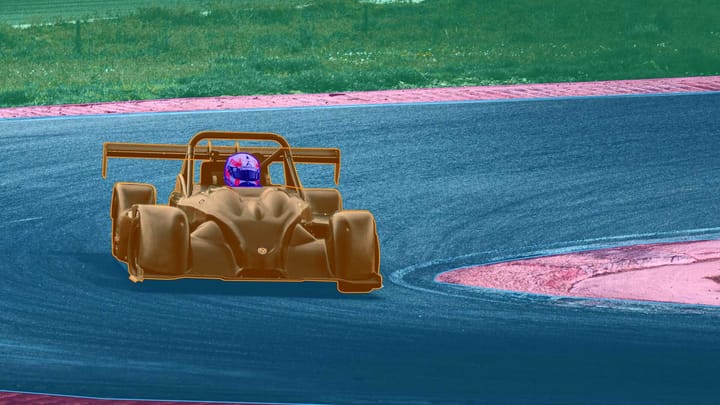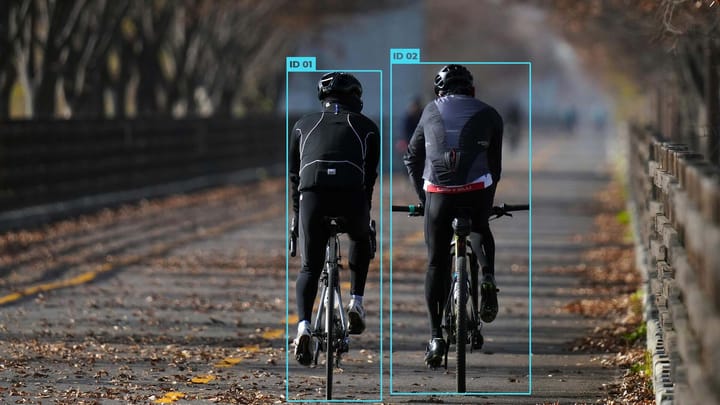Mastering Video Annotation with CVAT

CVAT is a powerful video labeling tool and platform for data annotation in computer vision projects. It simplifies the process of annotating images and videos for object detection, semantic segmentation, and keypoint annotation. With CVAT, users can easily manage annotation projects, interpolate annotations for accurate representation of object movements, and export datasets in multiple formats. Whether you're an AI researcher, computer vision engineer, or data scientist, CVAT provides the essential tools for efficient and precise video annotation.
Key Takeaways:
- CVAT is a versatile video labeling tool and platform for computer vision projects.
- It offers various annotation shapes for accurate object labeling and localization.
- CVAT simplifies the management of annotation projects and dataset export.
- Interpolation in CVAT enhances the accuracy of object movement representation.
- Export datasets in multiple formats for seamless integration with AI workflows.
Implementing Annotation Crowdsourcing with CVAT.ai and HUMAN Protocol
CVAT.ai and HUMAN Protocol integration provide a solution for annotation crowdsourcing at scale. Leveraging the power of CVAT for data annotation and Web3 technologies for cryptocurrency payments, the platform brings together requesters and annotators, revolutionizing the annotation process.
With CVAT.ai and HUMAN Protocol, requesters can easily describe their annotation tasks, provide the necessary data, set quality requirements, and specify reward details. On the other hand, annotators have the flexibility to choose assignments, learn annotation requirements, and start annotating using CVAT, a popular annotation tool known for its advanced features.
The platform offers automatic data annotation assignment preparation, management, and validation, ensuring high-quality annotations. This ensures consistency and uniformity in the annotations, providing accurate and reliable data for computer vision tasks.
What sets this platform apart is its integration of Web3 technologies, allowing payments to be made in cryptocurrencies. This not only empowers annotators to earn money but also creates a decentralized and secure payment system.
Annotation Crowdsourcing with CVAT.ai and HUMAN Protocol Integration
By integrating CVAT.ai with the HUMAN Protocol, annotation crowdsourcing becomes seamless and highly efficient. The platform utilizes the capabilities of CVAT for data annotation, while the HUMAN Protocol ensures transparent, secure, and decentralized payments using web3 technologies.
This integration enables the following key features:
- Automatic data annotation assignment preparation: The platform streamlines the process of preparing annotation tasks, assigning them to annotators, and managing the overall workflow.
- Annotation quality and validation: The platform ensures annotation quality through validation mechanisms, guaranteeing accurate and reliable annotations.
- Annotation management: Requesters can easily manage their annotation projects, track progress, and communicate with annotators, creating a collaborative environment.
With this comprehensive solution, the CVAT.ai and HUMAN Protocol integration offers a powerful platform for annotation crowdsourcing. It leverages the strengths of CVAT for data annotation and the decentralized nature of HUMAN Protocol, providing a win-win situation for requesters and annotators.
Annotating with CVAT.ai and HUMAN Protocol
Annotators can participate in the annotation crowdsourcing platform powered by CVAT.ai and HUMAN Protocol by following these simple steps:
- Register with the platform and create a profile.
- Browse available annotation assignments and choose the ones that align with their expertise and preferences.
- Familiarize themselves with the annotation requirements and guidelines provided by the requesters.
- Utilize the CVAT annotation tool to annotate the assigned data accurately and efficiently.
- Submit the completed annotations for validation and review.
- Receive payments in cryptocurrencies for the completed assignments.
The integration of CVAT.ai and HUMAN Protocol sets a new standard for annotation crowdsourcing. It combines the power of CVAT's annotation capabilities with the transparency and security of HUMAN Protocol's web3 technologies, creating a robust platform for data annotation at scale.
Getting Started with CVAT Annotation Tool - Image and Video Annotation
The CVAT annotation tool, developed by Intel, is a versatile tool for annotating images and videos in computer vision tasks. With its user-friendly interface and robust features, CVAT simplifies the annotation process and enhances the efficiency of computer vision projects.
CVAT supports various annotation formats, including:
- Bounding boxes for object detection
- Polygons for semantic segmentation
- Keypoints for precise localization
By offering these annotation formats, CVAT caters to different computer vision tasks, allowing users to accurately annotate and label objects in images and videos.
Creating and managing annotation projects with CVAT is straightforward. Users can customize labels and attributes to align with the requirements of their specific projects. The tool provides an intuitive interface for annotating images and videos, making it easy to draw bounding boxes, polygons, and keypoints accurately.
CVAT also offers advanced features such as interpolation, which enables the accurate representation of object movement across frames in a video. This feature is particularly useful for tasks like tracking or action recognition, where precise object movement annotation is essential.
Additionally, CVAT allows users to save and export annotations in multiple formats, facilitating seamless integration with downstream processes like model training and evaluation. The tool also supports the creation of video datasets, enabling researchers and developers to build comprehensive datasets for training and testing computer vision algorithms.
With its robust capabilities and user-friendly interface, the CVAT annotation tool empowers users to annotate images and videos efficiently, accelerating the development of computer vision models and applications.
Key Features of CVAT Annotation Tool:
| Annotation Formats | Interpolation | Saving and Exporting Annotations | Video Dataset Creation |
|---|---|---|---|
| Supports bounding boxes, polygons, and keypoints | Accurate representation of object movement | Seamless integration with downstream processes | Creation of comprehensive video datasets |
Annotating Images and Videos with Computer Vision Annotation Toolkit
The Computer Vision Annotation Toolkit, developed by Intel, is a versatile tool that simplifies the process of annotating images and videos for computer vision tasks. With this toolkit, users can create projects and customize labels and attributes to meet specific annotation requirements. Whether annotating individual frames or entire videos, the toolkit provides a user-friendly interface and intuitive controls for efficient annotation processes.
One of the key features offered by the Computer Vision Annotation Toolkit is interpolation, which enables accurate representation of object movements across frames. This ensures precise annotations throughout the video, contributing to more reliable analyses and insights. Furthermore, the toolkit allows users to save annotations and export datasets in various formats, providing the flexibility needed for seamless integration with different downstream tasks and systems.
The Computer Vision Annotation Toolkit empowers users to annotate images and videos with ease, enhancing the efficiency of data annotation processes. Whether annotating for object detection, semantic segmentation, or keypoint annotation, this toolkit provides the necessary tools and functionalities to streamline the annotation workflow. Its user-friendly interface, feature-rich capabilities, and compatibility with multiple annotation formats make it a reliable choice for computer vision researchers, developers, and practitioners.
By leveraging the Computer Vision Annotation Toolkit, users can expedite their data annotation tasks, ensuring accurate and comprehensive annotations for their computer vision projects. Whether you're working on image annotation or video annotation, this toolkit equips you with the necessary tools to streamline your workflow and produce high-quality annotated datasets for training and evaluation purposes. Excel in your computer vision endeavors with the Computer Vision Annotation Toolkit's robust annotation capabilities and seamless dataset export functionalities.
Installation and Setup of Computer Vision Annotation Toolkit
To start using the Computer Vision Annotation Toolkit, users need to follow the installation process, which involves installing Docker and running specific commands to set up the toolkit. Once installed, users can create projects, annotate images and videos, and utilize features like interpolation and dataset export.
The installation process for the Computer Vision Annotation Toolkit is straightforward and well-documented. Users can easily configure their annotation environment by following these steps:
- Install Docker: Docker is a containerization platform that allows for easy deployment of software applications. It provides an isolated environment for running the Computer Vision Annotation Toolkit.
- Download the Toolkit: Once Docker is installed, users can download the Computer Vision Annotation Toolkit container image.
- Run the Toolkit: After downloading the container image, users can run the toolkit by executing specific commands in the Docker terminal.
Once the toolkit is up and running, users can start creating annotation projects, annotating images and videos, and taking advantage of the toolkit's advanced features. The intuitive interface and user-friendly controls make it easy for users to navigate the toolkit and perform annotations with precision and efficiency.
The Computer Vision Annotation Toolkit also offers interpolation, which enables the accurate representation of object movements across frames in videos. Additionally, users can save and export annotations in various formats, allowing for seamless integration with other computer vision pipelines and workflows.
Benefits of the Computer Vision Annotation Toolkit
The Computer Vision Annotation Toolkit provides several benefits for users:
- Efficient Project Creation: Users can easily create and manage annotation projects, organizing their data and annotations effectively.
- Precise Image and Video Annotation: The toolkit supports various annotation types, such as bounding boxes, polygons, and keypoints, enabling users to label objects with high accuracy.
- Interpolation for Accurate Movement Representation: The interpolation feature allows for the precise representation of object movements in video annotations.
- Flexible Dataset Export: Users can export their annotated datasets in multiple formats, making it convenient to integrate the annotations into their desired workflows.
The Computer Vision Annotation Toolkit is a valuable tool for computer vision practitioners, providing a seamless and efficient annotation workflow for both image and video datasets. With its installation and setup process completed, users can maximize the potential of this toolkit and enhance their computer vision projects.
Conclusion
The combination of CVAT and the Computer Vision Annotation Toolkit presents a powerful solution for streamlining the annotation process in video annotation and computer vision tasks. These tools provide a user-friendly platform that simplifies the task of annotating both images and videos, offering efficient management of annotation projects and seamless dataset export.
With advanced features such as interpolation, the accuracy and efficiency of annotation tasks are significantly enhanced. This allows for precise object labeling and movement representation, resulting in high-quality annotations and optimal dataset creation. Whether users need to annotate images or videos, CVAT and the Computer Vision Annotation Toolkit offer comprehensive solutions that cater to various annotation needs.
By utilizing these tools, users can master video annotation and achieve superior results in their computer vision projects. The intuitive interface and robust functionality provided by CVAT and the Computer Vision Annotation Toolkit make the annotation process more efficient and enjoyable. Experience the power of these tools and take your data annotation to the next level.
FAQ
What is CVAT?
CVAT is a powerful tool for video annotation and data labeling in computer vision projects. It offers a user-friendly platform for annotating images and videos with various shapes such as bounding boxes, polygons, keypoints, and more.
How does CVAT enhance video analysis?
CVAT simplifies the annotation process and enhances the efficiency of video analysis using computer vision techniques. It allows users to manage annotation projects, interpolate annotations for accurate object movement representation, and export datasets in multiple formats.
How does CVAT.ai and HUMAN Protocol integration work?
CVAT.ai and HUMAN Protocol integration provide a solution for annotation crowdsourcing at scale. The online platform based on HUMAN Protocol services uses CVAT for data annotation and Web3 technologies for payments in cryptocurrencies. It brings together requesters, who need their data annotated, and annotators, who want to earn money by annotating data. The platform offers automatic data annotation assignment preparation, management, and validation, ensuring high-quality annotations.
What are the features of the CVAT annotation tool?
The CVAT annotation tool, developed by Intel, supports various annotation formats, including bounding boxes for object detection, polygons for semantic segmentation, and keypoints for precise localization. Users can create and manage annotation projects, customize labels and attributes, and annotate images and videos with ease. It also offers features like interpolation for accurate representation of object movement, saving and exporting annotations, and creating video datasets.
How can I get started with the Computer Vision Annotation Toolkit?
To start using the Computer Vision Annotation Toolkit, users need to follow the installation process, which involves installing Docker and running specific commands to set up the toolkit. Once installed, users can create projects, annotate images and videos, and utilize features like interpolation and dataset export. The installation process is straightforward, and the toolkit provides detailed documentation to guide users through the setup.
What are the benefits of using CVAT and the Computer Vision Annotation Toolkit?
CVAT and the Computer Vision Annotation Toolkit are powerful tools that streamline the annotation process for video annotation and computer vision tasks. These tools provide a user-friendly platform for annotating images and videos, managing annotation projects, and exporting datasets. With features like interpolation, they enhance the accuracy and efficiency of annotation tasks. Whether users need to annotate images or videos, these tools offer comprehensive solutions, allowing for precise object labeling and dataset creation.



Comments ()